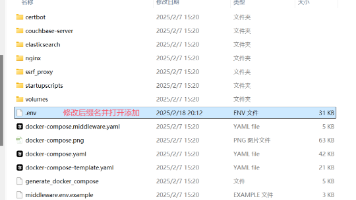C++ 中的 `.proto` 语法与使用指南
Protocol Buffers (protobuf) 是一种高效的序列化数据结构的工具,在 C++ 中使用需要先定义 `.proto` 文件,然后通过 protoc 编译器生成对应的 C++ 代码。// 重复字段(数组)// 命名空间,对应 C++ 中的命名空间。- 将生成的 `.pb.h` 和 `.pb.cc` 文件放在独立目录。// 设置name字段。// email字段未被设置(proto
# C++ 中的 `.proto` 语法与使用指南
Protocol Buffers (protobuf) 是一种高效的序列化数据结构的工具,在 C++ 中使用需要先定义 `.proto` 文件,然后通过 protoc 编译器生成对应的 C++ 代码。
## 1. 基本 `.proto` 文件结构
```proto
syntax = "proto3"; // 使用 proto3 语法
package my.package; // 命名空间,对应 C++ 中的命名空间
// 生成 C++ 代码的额外选项
option cc_generic_services = true; // 生成服务代码
option optimize_for = SPEED; // 优化选项: SPEED, CODE_SIZE, or LITE_RUNTIME
// 消息类型定义
message Person {
string name = 1;
int32 id = 2;
string email = 3;
enum PhoneType {
MOBILE = 0;
HOME = 1;
WORK = 2;
}
message PhoneNumber {
string number = 1;
PhoneType type = 2;
}
repeated PhoneNumber phones = 4; // 重复字段(数组)
}
// 服务定义(用于gRPC)
service PersonService {
rpc GetPerson (PersonRequest) returns (PersonResponse);
}
```
## 2. 生成 C++ 代码
使用 protoc 编译器生成代码:
```bash
protoc --cpp_out=. your_file.proto
```
这会生成两个文件:
- `your_file.pb.h` (头文件)
- `your_file.pb.cc` (实现文件)
## 3. 生成的 C++ 代码结构
对于上面的 `Person` 消息,会生成以下 C++ 类:
```cpp
namespace my::package {
class Person : public ::google::protobuf::Message {
public:
// 构造函数/析构函数
Person();
~Person();
// 字段访问器
const std::string& name() const;
void set_name(const std::string& value);
int32_t id() const;
void set_id(int32_t value);
// 嵌套类型
enum PhoneType {
MOBILE = 0,
HOME = 1,
WORK = 2
};
class PhoneNumber : public ::google::protobuf::Message {
// ...
};
// 重复字段访问
int phones_size() const;
const PhoneNumber& phones(int index) const;
PhoneNumber* add_phones();
// 序列化/反序列化
bool SerializeToString(std::string* output) const;
bool ParseFromString(const std::string& data);
// 更多方法...
};
} // namespace my::package
```
## 4. C++ 中使用 protobuf 消息
### 创建和填充消息
```cpp
#include "your_file.pb.h"
void CreatePerson() {
my::package::Person person;
person.set_name("John Doe");
person.set_id(1234);
person.set_email("johndoe@example.com");
auto* phone = person.add_phones();
phone->set_number("123-4567");
phone->set_type(my::package::Person::HOME);
}
```
### 序列化和反序列化
```cpp
// 序列化为字符串
std::string serialized;
person.SerializeToString(&serialized);
// 从字符串反序列化
my::package::Person new_person;
if (!new_person.ParseFromString(serialized)) {
std::cerr << "Failed to parse person." << std::endl;
}
```
### 文件 I/O
```cpp
#include <fstream>
// 写入文件
std::ofstream out("person.pb", std::ios::binary);
person.SerializeToOstream(&out);
out.close();
// 从文件读取
std::ifstream in("person.pb", std::ios::binary);
my::package::Person file_person;
file_person.ParseFromIstream(&in);
in.close();
```
## 5. 高级特性
### oneof 字段
`.proto` 定义:
```proto
message SampleMessage {
oneof test_oneof {
string name = 1;
int32 id = 2;
}
}
```
C++ 中使用:
```cpp
SampleMessage msg;
msg.set_name("hello"); // 设置name字段
assert(msg.has_name()); // 检查哪个字段被设置
msg.set_id(123); // 自动清除name字段
assert(msg.has_id());
```
### Map 类型
`.proto` 定义:
```proto
message MapExample {
map<string, int32> values = 1;
}
```
C++ 中使用:
```cpp
MapExample example;
(*example.mutable_values())["key1"] = 100;
(*example.mutable_values())["key2"] = 200;
// 遍历map
for (const auto& pair : example.values()) {
std::cout << pair.first << ": " << pair.second << std::endl;
}
```
## 6. 性能优化
### Arena 分配
```cpp
#include <google/protobuf/arena.h>
google::protobuf::Arena arena;
my::package::Person* person =
google::protobuf::Arena::CreateMessage<my::package::Person>(&arena);
// 使用person...
// 不需要手动delete,arena会统一释放
```
### 重用消息对象
```cpp
my::package::Person person;
for (int i = 0; i < 100; i++) {
person.Clear(); // 重用对象
// 重新填充person...
}
```
## 7. 与标准容器互操作
```cpp
// 从vector初始化repeated字段
std::vector<std::string> names = {"Alice", "Bob", "Charlie"};
my::package::Person person;
for (const auto& name : names) {
person.add_names(name);
}
// 将repeated字段转为vector
std::vector<std::string> name_vec;
for (int i = 0; i < person.names_size(); i++) {
name_vec.push_back(person.names(i));
}
```
## 8. 最佳实践
1. **消息设计**:
- 保持消息结构简单
- 避免深层嵌套
- 为常用消息提供便捷构造方法
2. **性能考虑**:
- 对大消息使用 arena 分配
- 重用消息对象减少内存分配
- 考虑使用 `[deprecated]` 标记而不是删除字段
3. **版本兼容**:
- 不要修改已有字段的编号
- 废弃字段使用 `reserved` 标记
- 新增字段应该是可选的
4. **代码组织**:
- 将生成的 `.pb.h` 和 `.pb.cc` 文件放在独立目录
- 为大型项目创建多个 `.proto` 文件
## 9. 常见问题解决
### 字段未设置检查
```cpp
if (person.has_email()) {
// email字段被设置了
} else {
// email字段未被设置(proto3中默认值)
}
```
### 枚举处理
```cpp
my::package::Person::PhoneType type = person.phones(0).type();
switch (type) {
case my::package::Person::MOBILE:
// 处理mobile
break;
case my::package::Person::HOME:
// 处理home
break;
// ...
}
```
### 调试输出
```cpp
#include <google/protobuf/util/json_util.h>
std::string json_str;
google::protobuf::util::MessageToJsonString(person, &json_str);
std::cout << json_str << std::endl;
```
通过合理使用 Protocol Buffers,可以在 C++ 项目中实现高效的数据序列化和跨平台通信。
更多推荐
 已为社区贡献4条内容
已为社区贡献4条内容








所有评论(0)